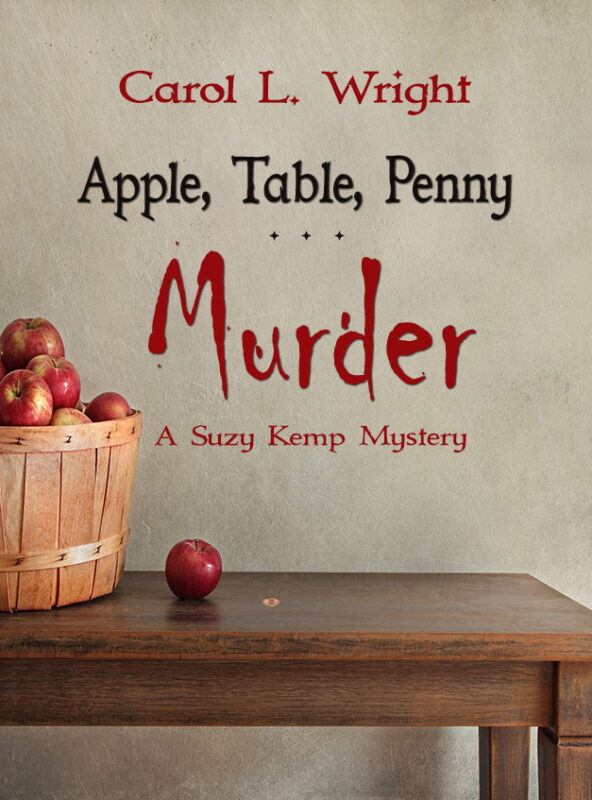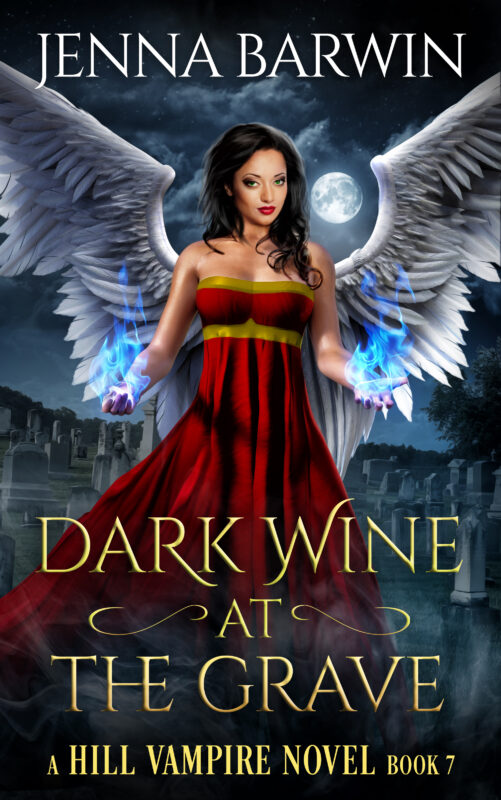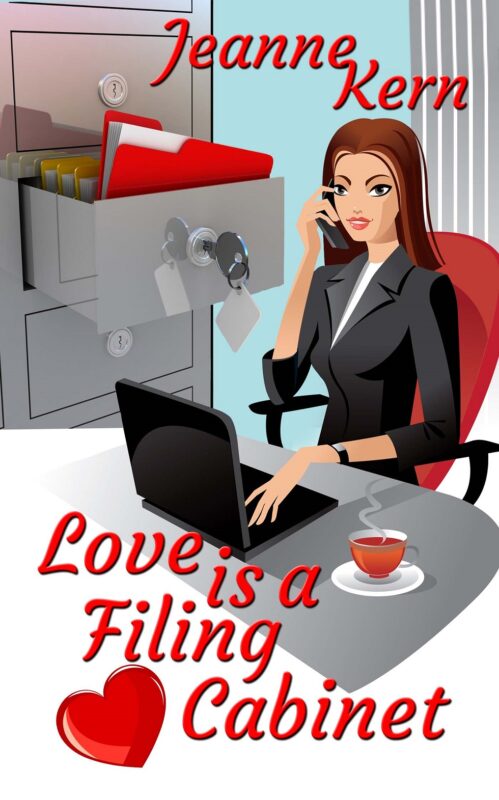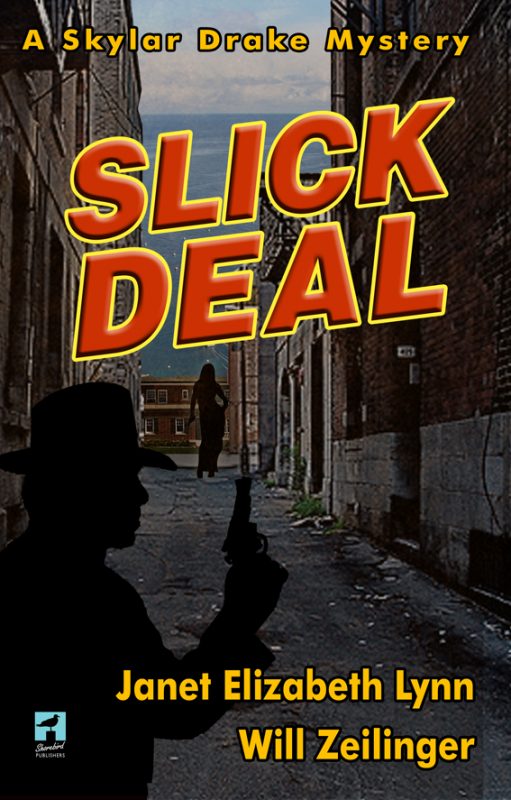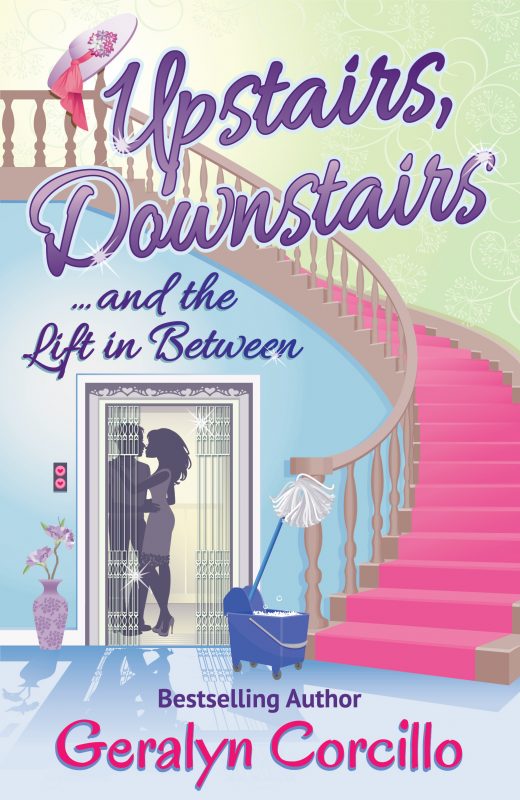“Ready, Aim, Podcast!”
August 23, 2007 by A Slice of Orange in category Archives tagged as Confessions of a Podcast Goddess
by Jina Bacarr
Does size matter?
When conference goers at the recent Romance Writers of America convention in Dallas, Texas talked shop, the question “Does size matter?” came up at frequent intervals, especially at the Passionate Ink luncheon (RWA Chapter of erotica authors).
They were comparing megapixels.
Megapixels? What the heck is a megapixel? you ask. With the explosion of digital cameras available on the market, it’s a hot topic and one you can’t ignore when choosing a camera. My first digital camera was a cumbersome Sony 1.3 megapixel, which used 3 ½ inch floppies to record pictures. Imagine stuffing your purse with twenty floppies. Not fun. Now I use a Canon PowerShot SD600 that’s small and light and weighs less than six ounces. I love it.
So what is a megapixel? Here’s my interpretation: Digital camera images are made up of rows of colored dots, something like the Impressionist painting style known as Pointillism. These colored dots make up a canvas or rectangular grid that gives you the whole picture when you look at it from a distance. If you’ve ever stared at an Impressionist painting in a museum, you know what I mean. Up close, it resembles a bunch of colorful dots (black was not included in the Impressionist palette), but viewed from far away it becomes a breathtaking panorama of the artist’s vision.
When you shoot a picture with your digital camera, you are the artist and these same dots are called “pixels.” Each pixel used in a digital camera is either red, green or blue (usually with twice as many green pixels). How many dots or pixels are on a page? Rows and rows, like wildflowers swaying in a field. For example, an picture of you at the RWA conference on a web page might be made up of 500 rows each with 400 pixels in each row. The total number of pixels is 200,000. That’s a lot of wildflowers.
According to experts, these pixels contain a number of different brightness values, usually 256 in screen displays (I prefer 1024) or 4096 in camera images. Because digital camera images are generally larger than this, we talk about their sizes in terms of Megapixels (Mp). 1 Mp = 1 million pixels. So the 200,000 pixel image of the hunk you want to use for the hero in your next book is 0.2 Mp.
Want to make your pictures smaller? This is one time it’s easier to drop a few pounds, I mean, pixels, than it is to gain them back. To increase the pixels or dots, you have to guess the values of the extra pixels you need. Some software programs claim to do this, but like fad diets, they’re not always successful.
So, how many pixels do you need? If you’re buying a camera to view your pictures on your web page, you’ll need fewer pixels–1.3 will suffice. If you want to print them on standard 4×6 prints or make postcards of your latest bookcover, you’ll need at least 1.5-2.3 Mp; for enlargements of 8×10 for your author head shot for your press kit, you’ll need 4-5 Mp.
Although I primarily use my Canon Powershot for my website images and video, I bought a 6 Mp because I wanted the option of changing the size of the images. I usually shoot 1600 by 1200 so I can reduce and crop to a smaller size.
Now if could just figure out how to drop 5 pixels, I mean pounds, with the click of a mouse…
Jina Bacarr spent many hours studying the size of…hmm…pixels in Impressionist paintings for her latest Spice book, NAUGHTY PARIS, a time travel about the raucous and erotic world of 1889 Paris.
Research Book Sale
August 22, 2007 by A Slice of Orange in category Archives tagged as Reader ReviewTOWN AND COUNTRY BY MARK GIROUARD is another of the books donated for OCC’s September meeting’s Research Book Sale–and it’s another book, that it’s going to be hard for me to let go.
I enjoyed several of the chapters in this book, especially Chapter Three, which talked about John Chubb, who “with a sharp eyes, a genial wit and a skilled brush set out to put on to paper, the people of Bridgwater and its neighborhood in the last decades of the eighteenth century.”
 Reading about Chubb and his observations was fascinating but what really made me smile are Chubb’s sketches, several of which are shown in this chapter including one of the biggest and liveliest of Chubb’s drawings which, according to Girouard, shows Lord Perceval, eldest son of Lord Egmont, “dressed in the height of fashion and seated at the reins of his phaeton, with a lapdog on his lap and a favour in his hat.” (And doesn’t the dog look like Mindy Neff’s little Harley? 😉
Reading about Chubb and his observations was fascinating but what really made me smile are Chubb’s sketches, several of which are shown in this chapter including one of the biggest and liveliest of Chubb’s drawings which, according to Girouard, shows Lord Perceval, eldest son of Lord Egmont, “dressed in the height of fashion and seated at the reins of his phaeton, with a lapdog on his lap and a favour in his hat.” (And doesn’t the dog look like Mindy Neff’s little Harley? 😉
This is a great book. All I can say is if it makes it out of my house to the Research Book Fair, then it will be a testament to my strength of character.
***************************************
Sandy Novy-Chvostal (aka Sandra Paul) is a recovering bookaholic, a published author, and 2007 Co-President of OCC/RWA.
Wisdom from Writers Rock
August 21, 2007 by A Slice of Orange in category Archives tagged as Wisdom from Writers RockHot August Nights…..and Romance Writers
by Johna Machak
The Dog Days of August is what some people call them. Those long, hot sultry days of summer when all you can manage is resting on the patio with a tall glass of sweet iced tea. It’s too hot to do anything else, even sleep. But maybe these lazy, hazy dog days are a good thing for romance writers. Gets you thinking about stuff. Sitting on the porch during a hot August night, doing nothing but letting your mind wander back to other hot summer evenings. Long days of heat and sunshine, with even longer sweltering nights. The air so thick it’s an effort just to breathe. There’s a restlessness about, a dissatisfaction with everything, a palpable tension.
Use that memory or feeling to help write that first kiss, first love scene, or ratchet up the sexual tension between your hero and heroine. That restlessness may cause your heroine to do something she wouldn’t normally do, or the hero to reveal his true feelings for the heroine. They act or react out of character, and when that happens it starts to get interesting.
As romance writers we know the act of writing is part mechanical, writing or typing words onto that blank white page; part intellectual, creating and plotting our story; and part emotional, making that love story between our hero and heroine come alive and be believable to readers. To write that emotion we need to feel it, or remember it. So, instead of staring at the blank page and stressing out, sit and relax, and let your mind drift during these hot August nights. You may be surprised what comes to mind. And, it’s really too warm to do anything else, or is it?
Hmmm……there’s something about memories of a long hot summer night in a small town, where it’s so quiet you can hear crickets down by the creek, that gets me thinking about a teenage girl sneaking out to meet……
That’s a fact Jack: The Dog Days of August is a phrase coined by the ancient Romans, and referred to the time of year when Sirius, the dog star, rose just before or at sunrise.
*******************************
Johna Machak is a member of the “Writers Rock” critique group, along with Barb DeLong, Jann Audiss and Cathy Oliver. She has served on the OCC board as Co-President (1999, 2000), Vice-President (1998), Membership Director (1996, 1997) and Webmaster (2002, 2003)
President’s Message
August 20, 2007 by A Slice of Orange in category Archives tagged as President's MessageAh, the weary traveler is home from Texas, bowed but unbeaten. In fact, I’m so proud of our chapter, the buttons are popping off my blouse. Conversations were going on in every corner of the hotel. I heard things like “Mention it to Orange County, they’ll come up with a way to make it work” or “If Orange County hasn’t tried it, “then it probably isn’t worth the trouble.”
Now that’s enough to make anyone proud. But don’t get smug. It’s also enough to make one quake in their boots! It means, of course, that we have to stay on our toes. Because I speak for your board when I say our goal is to continue to give our members what they need by way of support of their writing endeavors, and the incentive to keep trying against the odds. We also hope that other chapters will continue to look to us for help, and challenge us to do even better.
Another thing I heard in Dallas was a common line running through the conversations of published writers. It went something like this–“I write every day at the same time for x-number of hours come hell or high water!” Also heard this theme–“I sent that blasted manuscript out 22 times before it sold!” Which tells me that the fifty-some dollars in postage I have invested in one proposal alone is just a drop in the bucket. I’m packaging it up to send it out again and again and again . . .
Things to put on your calendar . . . WRITE! WRITE! BUY RAFLLE TICKETS! START SAVING FOR SEATTLE IN ’88 (site of the National Conference). SUBMIT! SUBMIT! REMEMBER THE HANDS-ON WORKSHOP NOV 14 — IT WILL BE FIRST COME, FIRST SERVED. REMEMBER THE LOU TICE SEMINAR IN JANUARY.
GINI WILSON
C0-President
This was the President’s Message in the September 1987 issue of the Orange County Chapter Newsletter. Twenty years ago, the RWA National Conference was also held in Dallas, TX.
IN MEMORY OF GINI WILSON
August 19, 2007 by A Slice of Orange in category Archives tagged as In Memory “I am sorry to be the bearer of bad news, Gini Wilson has passed a way from cancer today 08/17/07. She loved you all very much and thought of you often.
“I am sorry to be the bearer of bad news, Gini Wilson has passed a way from cancer today 08/17/07. She loved you all very much and thought of you often.
We invite you to post your thoughts and memories of Gini at http://authorginiwilsonmemorial.blogspot.com/
Affiliate Links
A Slice of Orange is an affiliate with some of the booksellers listed on this website, including Barnes & Nobel, Books A Million, iBooks, Kobo, and Smashwords. This means A Slice of Orange may earn a small advertising fee from sales made through the links used on this website. There are reminders of these affiliate links on the pages for individual books.
Search A Slice of Orange
Find a Column
Archives
Featured Books
APPLE, TABLE, PENNY . . . MURDER
How can you explain a disappearance when everyone denies it happened?
More info →DARK WINE AT THE GRAVE
Henry never thought he’d turn someone vampire. Especially someone who wasn’t his mate…
More info →SLICK DEAL
On the eve of the New Year, 1956, oil tycoon, Oliver Wright dies suspiciously at a swanky Hollywood New Years Eve party. Some think it was suicide.
More info →UPSTAIRS, DOWNSTAIRS … AND THE LIFT IN BETWEEN
She crosses and ocean to take the holiday of her dreams at an English country estate ... where he works below stairs.
More info →Newsletter
Contributing Authors
Search A Slice of Orange
Find a Column
Archives
Authors in the Bookstore
- A. E. Decker
- A. J. Scudiere
- A.J. Sidransky
- Abby Collette
- Alanna Lucus
- Albert Marrin
- Alice Duncan
- Alina K. Field
- Alison Green Myers
- Andi Lawrencovna
- Andrew C Raiford
- Angela Pryce
- Aviva Vaughn
- Barbara Ankrum
- Bethlehem Writers Group, LLC
- Carol L. Wright
- Celeste Barclay
- Christina Alexandra
- Christopher D. Ochs
- Claire Davon
- Claire Naden
- Courtnee Turner Hoyle
- Courtney Annicchiarico
- D. Lieber
- Daniel V. Meier Jr.
- Debra Dixon
- Debra H. Goldstein
- Debra Holland
- Dee Ann Palmer
- Denise M. Colby
- Diane Benefiel
- Diane Sismour
- Dianna Sinovic
- DT Krippene
- E.B. Dawson
- Emilie Dallaire
- Emily Brightwell
- Emily PW Murphy
- Fae Rowen
- Faith L. Justice
- Frances Amati
- Geralyn Corcillo
- Glynnis Campbell
- Greg Jolley
- H. O. Charles
- Jaclyn Roché
- Jacqueline Diamond
- Janet Lynn and Will Zeilinger
- Jeff Baird
- Jenna Barwin
- Jenne Kern
- Jennifer D. Bokal
- Jennifer Lyon
- Jerome W. McFadden
- Jill Piscitello
- Jina Bacarr
- Jo A. Hiestand
- Jodi Bogert
- Jolina Petersheim
- Jonathan Maberry
- Joy Allyson
- Judy Duarte
- Justin Murphy
- Justine Davis
- Kat Martin
- Kidd Wadsworth
- Kitty Bucholtz
- Kristy Tate
- Larry Deibert
- Larry Hamilton
- Laura Drake
- Laurie Stevens
- Leslie Knowles
- Li-Ying Lundquist
- Linda Carroll-Bradd
- Linda Lappin
- Linda McLaughlin
- Linda O. Johnston
- Lisa Preston
- Lolo Paige
- Loran Holt
- Lyssa Kay Adams
- Madeline Ash
- Margarita Engle
- Marguerite Quantaine
- Marianne H. Donley
- Mary Castillo
- Maureen Klovers
- Megan Haskell
- Melanie Waterbury
- Melissa Chambers
- Melodie Winawer
- Meriam Wilhelm
- Mikel J. Wilson
- Mindy Neff
- Monica McCabe
- Nancy Brashear
- Neetu Malik
- Nikki Prince
- Once Upon Anthologies
- Paula Gail Benson
- Penny Reid
- Peter Barbour
- Priscilla Oliveras
- R. H. Kohno
- Rachel Hailey
- Ralph Hieb
- Ramcy Diek
- Ransom Stephens
- Rebecca Forster
- Renae Wrich
- Roxy Matthews
- Ryder Hunte Clancy
- Sally Paradysz
- Simone de Muñoz
- Sophie Barnes
- Susan Squires
- T. D. Fox
- Tara C. Allred
- Tara Lain
- Tari Lynn Jewett
- Terri Osburn
- Tracy Reed
- Vera Jane Cook
- Vicki Crum
- Writing Something Romantic
Affiliate Links
A Slice of Orange is an affiliate with some of the booksellers listed on this website, including Barnes & Nobel, Books A Million, iBooks, Kobo, and Smashwords. This means A Slice of Orange may earn a small advertising fee from sales made through the links used on this website. There are reminders of these affiliate links on the pages for individual books.


